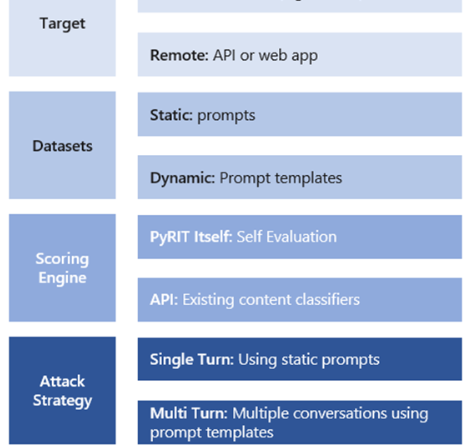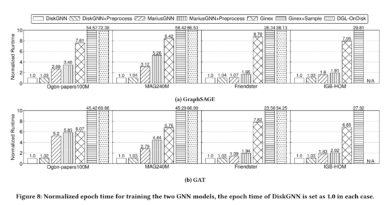PyRIT: An Essential Tool for Evaluating the Risks of Generative AI
In today’s rapidly evolving era of artificial intelligence, generative models have gained significant popularity. These models, also known as Large Language Models (LLMs), have the ability to generate realistic and coherent text. However, with this power comes the potential for risks such as producing misleading, biased, or harmful content. As machine learning engineers and security professionals grapple with these challenges, the need for a comprehensive and automated framework to assess the risks associated with generative AI becomes paramount.
The Gap in Existing Solutions
While some attempts have been made to address the risks associated with generative AI, existing solutions often require manual efforts and lack a comprehensive framework. This creates a gap in the ability to evaluate and improve the security of LLM endpoints efficiently. However, a novel tool called PyRIT (Python Risk Identification Tool) aims to bridge this gap by providing an open-access automation framework for generative AI.
Automating AI Red Teaming with PyRIT
PyRIT takes a proactive approach by automating AI Red Teaming tasks. Red teaming involves simulating attacks to identify vulnerabilities in a system. In the context of PyRIT, it means challenging LLMs with various prompts to assess their responses and uncover potential risks. By automating this process, PyRIT allows security professionals and researchers to focus on more complex tasks, such as identifying misuse or privacy harms, while PyRIT handles the automation of red teaming activities.
Key Components of PyRIT
PyRIT consists of several key components that work together to evaluate the risks associated with generative AI models. These components include:
- Target: The Target component represents the LLM being tested. It allows researchers to evaluate the responses generated by the model and assess its robustness.
- Datasets: Datasets provide a variety of prompts for testing the LLM. These prompts cover a range of topics and scenarios to ensure a comprehensive evaluation.
- Scoring Engine: The Scoring Engine evaluates the responses generated by the LLM. It analyzes the content and classifies any potential risks or issues.
- Attack Strategy: The Attack Strategy outlines methodologies for probing the LLM. It defines the specific prompts and techniques used to challenge the model and uncover any vulnerabilities.
- Memory: The Memory component records and persists all conversations during testing. This allows researchers to review and analyze the interactions between the LLM and the prompts.
The “Self-Ask” Methodology
PyRIT employs a methodology called “self-ask,” which goes beyond simply requesting a response from the LLM. It also gathers additional information about the prompt’s content. This extra information is then utilized for various classification tasks, helping to determine the overall score of the LLM endpoint. By gathering more context about the prompt, PyRIT enhances its ability to identify potential risks and issues.
Metrics for Assessing LLM Robustness
PyRIT utilizes a range of metrics to assess the robustness of generative AI models. These metrics categorize risks into harm categories, such as fabrication, misuse, and prohibited content. By categorizing risks, researchers can establish a baseline for their model’s performance and track any degradation or improvement over time. This allows for a more comprehensive evaluation and helps identify potential areas for improvement.
Versatility in Red Teaming
PyRIT supports both single-turn and multi-turn attack scenarios, providing a versatile approach to red teaming. Single-turn attacks involve challenging the LLM with a single prompt and evaluating its response. On the other hand, multi-turn attacks involve a series of prompts and responses, allowing for a more in-depth evaluation of the LLM’s behavior. This versatility ensures that PyRIT can adapt to different evaluation scenarios and provide a comprehensive assessment of generative AI models.
Empowering Machine Learning Engineers
PyRIT empowers machine learning engineers by providing them with a powerful tool to evaluate the risks associated with generative AI models. By streamlining the red teaming process and offering detailed metrics, PyRIT enables researchers and engineers to proactively identify and mitigate potential risks. This not only ensures the responsible development and deployment of generative AI models but also helps build trust and confidence in these technologies.
Conclusion
PyRIT is a Python Risk Identification Tool that addresses the pressing need for a comprehensive and automated framework to assess the security of generative AI models. By automating the red teaming process and offering detailed metrics, PyRIT empowers machine learning engineers and security professionals to identify and mitigate potential risks proactively. With the increasing adoption of generative AI models, PyRIT plays a critical role in ensuring the responsible development and deployment of these technologies. By utilizing PyRIT, researchers can confidently evaluate the robustness of their models and contribute to the advancement of secure and trustworthy AI systems.
Also, don’t forget to follow us on LinkedIn. Do join our active AI community on Discord.




